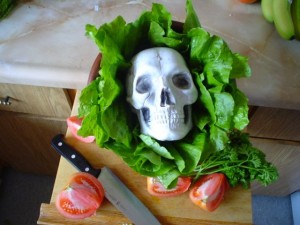New field research out of Clarkson University in upstate New York is attempting to answer how likely microbes can travel from manure application sites to downwind produce.
 Shane Rogers, an associate professor of civil and environmental engineering, led a research team that looked into the issue. They measured how far common bacteria, including Salmonella and E. coli, are likely to travel downwind from manure application sites. They hoped to better understand how fresh produce might be contaminated by nearby animal agriculture practices.
Shane Rogers, an associate professor of civil and environmental engineering, led a research team that looked into the issue. They measured how far common bacteria, including Salmonella and E. coli, are likely to travel downwind from manure application sites. They hoped to better understand how fresh produce might be contaminated by nearby animal agriculture practices.
“Our goal was to provide a logical framework to study this pathway,” Rogers said. This helped them make science-based recommendations for setback distances that protect human health.
The team used field data to understand how these bacteria travel from manure application sites to produce. The research lasted three years. They took samples at several distances from manure application sites and measured the presence of illness-causing bacteria.
The researchers used computer models to expand their understanding. “It is not possible to obtain measurements for every possible set of circumstances that may exist,” Rogers said. “The models allow us to predict produce contamination over a larger range of probable conditions than our raw measurements would provide.” These include the type of manure, the terrain of the farm, and weather conditions at the time the manure is applied.
The team also evaluated the risk of illness. This gave the team a better understanding of how likely someone is to get sick from produce when a certain amount of bacteria is present.
Combining all that data, the team found that produce fields should be set back from areas of manure application by at least 160 meters. That distance should help lower the risk of foodborne illness to acceptable levels (1 in 10,000).
Rogers emphasized that the advice is for a minimum setback. “(160 meteårs is) the minimum distance that produce growers should maintain between manure application activities and produce growing areas,” Rogers said. Additional distance and delay between manure application and harvest would provide further protection.
